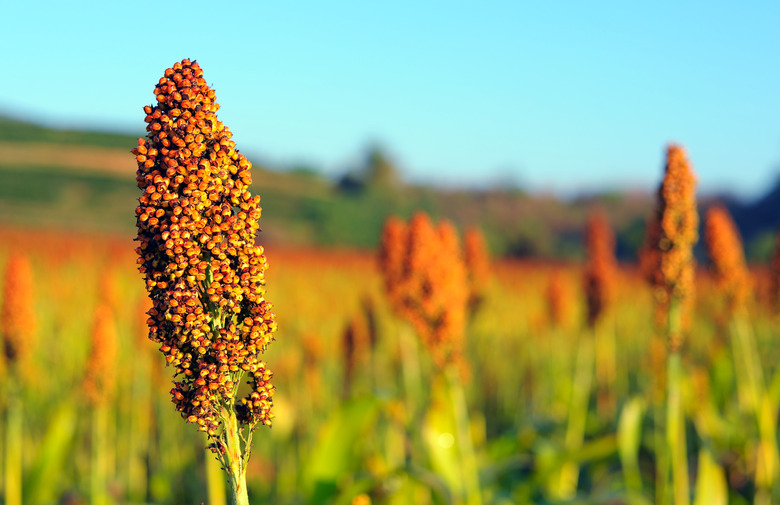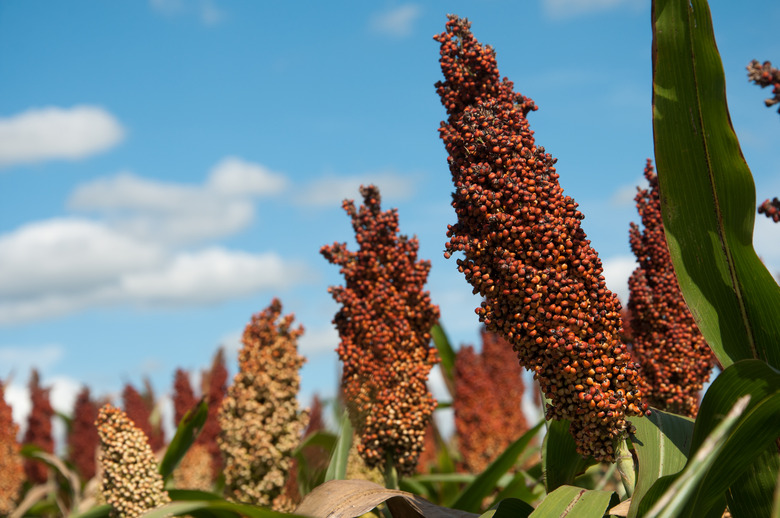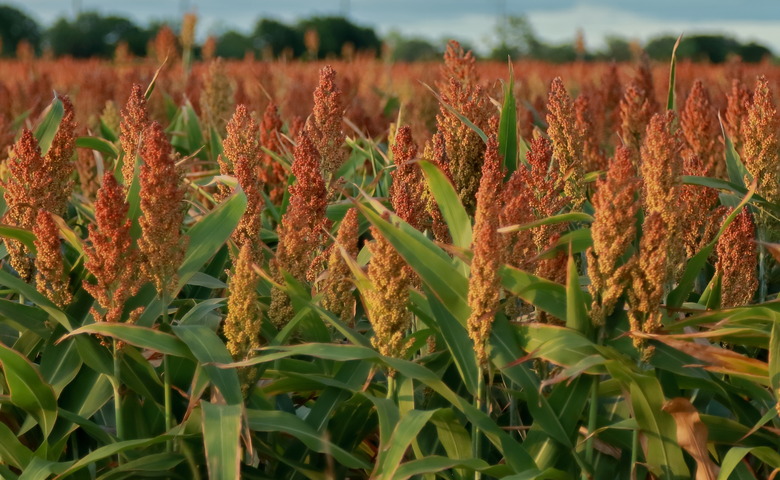How To Grow Sorghum
We may receive a commission on purchases made from links.
Sorghum (Sorghum bicolor) may be the most nutritious food crop you have never heard of. Although it is popular in other countries, sorghum has been slow to catch on in United States gardens. This is unfortunate, as sorghum is a highly nutritious food crop that is easy to grow.
Unlike other grasses, sorghum doesn't grow rhizomes (lateral underground stems). This tropical African native needs lots of warmth and sunlight, but it is not as fussy about water as the other plants in your vegetable garden.
It is important to note that sorghum is considered a noxious and invasive plant in certain parts of the United States. Do not plant sorghum in Ohio, where doing so is illegal. Also refrain from planting it in North Carolina, Pennsylvania, Indiana, Nevada, Iowa, and Maryland as well. Although planting in these states isn't illegal, it's not recommended.
Best Uses for Sorghum
Best Uses for Sorghum
Typically grown commercially, sorghum is useful as a livestock feed, as a cover crop, and as a biofuel. Home gardeners, however, grow sorghum as a food crop. Home chefs cook this hearty grain like rice, pop it like popcorn, and mill it into gluten-free flour. When you are growing sorghum for grain, you will need about 10 plants to get a pound of grain.
If you opt to grow a sweet sorghum variety, you can get further use from the plant by harvesting its stalks. You can then squeeze the liquid from them and use it to make a sweet syrup.
Sorghum is definitely worth a try even if you have never heard of it before. One cup of sorghum contains 20 percent of the recommended daily fiber intake. It is also full of B vitamins, copper, magnesium, and antioxidants.
Starting Sorghum From Seed
Starting Sorghum From Seed
Sorghum plants are heavy feeders, and they need large amounts of nitrogen to thrive. To provide it, work some compost into the soil before sowing sorghum seeds. After tilling, sow sorghum seeds 1 to 2 inches deep, leaving 10 to 15 inches between plants. Drop three or four seeds into every planting hole.
Cover your seeds with soil and then gently water them. After they sprout, thin your seedlings to at least 8 inches apart if necessary.
In What Zone Does Sorghum Grow Best?
In What Zone Does Sorghum Grow Best?
Gardeners can grow sorghum over the summer anywhere in USDA plant hardiness zones 2 to 11. Although it is grown as an annual, sorghum is technically a perennial that loves heat. If you live in USDA hardiness zone 9 and warmer, your sorghum plant may live as a perennial.
Don' be disappointed if it doesn't, however. Sorghum doesn't always winter well in the United States, prompting agricultural specialists to try and create a more winter-worthy variety.
When Should You Plant Sorghum?
When Should You Plant Sorghum?
Because it thrives in the summer heat, there is no rush to get your sorghum planted early in the spring. Some gardeners wait until May and even June to plant sorghum. Sorghum provides the highest yield in areas where the daytime temperature reaches at least 80 degrees Fahrenheit. If you can get there, 90 degrees is even better.
Soil, Sunlight, and Water Recommendations for Sorghum
Soil, Sunlight, and Water Recommendations for Sorghum
Ideally, sorghum prefers soil with a pH of 5.5 to 6.5 that drains well. Imperfect conditions are not a deal breaker, however, and sorghum will tolerate overly wet soil better than most other grain crops. Sorghum can also survive drought by going dormant, but it is best not to push your plants to either extreme. Instead, strive to provide 3 to 4 inches of water every 10 days.
Sorghum likes full sun and lots of nitrogen. Even if you added compost to your soil before planting, fertilize your sorghum with a nitrogen-rich fertilizer six weeks after planting.
Although it is not an issue when your plants get older, young sorghum plants do not compete well with weeds. Mulch around your plants to keep weeds down and then weed by hand or with a hoe as needed. If you are using a hoe, do so carefully because digging too deeply can damage sorghum roots. Hoe lightly and keep the tool shallow.
How to Winterize Sorghum
How to Winterize Sorghum
Sorghum is a tropical and warm-weather-loving plant that is simply not destined to make it through the winter in most of the United States. It is technically a perennial, however, so it may survive the mild winters in the southernmost parts of the country.
Almost always grown as an annual, sorghum's technical status is as a perennial in USDA zones 9 and warmer. It is feasible to think that gardeners in these regions might be able to overwinter their sorghum by covering it with mulch. The plant will never survive a frost or frozen ground, however.
Note, however, that sorghum is easy to grow from seed and is probably not worth most overwintering efforts. Botanists and scientists are working to create a hybrid sorghum species that grows as a perennial more readily in cooler climates, but their efforts have not been sufficiently fruitful as of yet.
How to Harvest Sorghum
How to Harvest Sorghum
Sorghum matures and is ready to harvest about 120 days after planting. Plants are ready when the seeds grow firm enough to resist being dented by your fingernail. To harvest sorghum, cut the head off the plant with a sharp knife and then lay it out to dry. When you do this, be sure to choose an area that is protected from birds and rodents. You don't want them to eat your sorghum before you can do so yourself.
Give the harvested seed heads 10 to 14 days to dry. When they have dried, roll them inside a piece of screen until the seeds are free of debris.
If you grow a sweet sorghum, cut down the canes with a sharp knife about two weeks after the milk stage. During the milk stage, sticky, white syrup will emerge from canes that you cut and then squeeze. You will see seed heads on the plant at this stage, but they won't yet be mature.
Strip the leaves from the cut canes and then press them, collecting the light-green juice they emit. You can then cook this juice into a sweet syrup.
Sorghum syrup is ready before the plant's seeds mature, so you will have to pick one for harvest. If you harvest early for the syrup, use the seeds only for feeding livestock if applicable. You can cook them and eat them, but they won't be as tasty as mature seeds.
Common Pests and Other Problems for Sorghum
Common Pests and Other Problems for Sorghum
Birds and rodents both love sorghum seeds, and consequently, they may get to your plants before you do at harvest time. To help prevent this from happening, place bird netting over the seed heads as they mature.
The two insects that you are most likely to encounter on your sorghum crops are aphids and caterpillars, both of which you can pick off by hand or dislodge with a blast of water. Sorghum midge, however, is a different story.
Sorghum midges are tiny, reddish-orange flies that can do big damage to sorghum plants. If you see them, treat your crop with an insecticidal spray. Repeat the application if you are still seeing midges three to five days after the initial treatment.
Common Diseases for Sorghum
Common Diseases for Sorghum
Sorghum is susceptible to a handful of diseases and infections, but home gardeners typically do not experience major issues with these plants. To ensure a disease-free crop, grow sorghum only from high-quality seeds. Rotate your crops rather than planting them in the same spot each year. Choose disease-resistant varieties and make sure you plant your sorghum on well-draining soil.
You can also minimize problems by keeping your soil pH between 6.0 and 6.5, staying out of your garden when it is wet and irrigating your plants' roots rather than their leaves. Keeping weeds out of the garden also helps limit the spread of plant disease, as does taking care of insect problems promptly.
If you are having problems, remove and promptly destroy any infected plants. If your problems extend beyond just one or two plants, take a sample to your local garden center or cooperative extension office and ask for help. Proper identification of the disease with which you are dealing will allow you to choose the right treatment without any trial and error. A fungal treatment or bactericide will usually do the trick, but it is best to identify the issue you are facing before haphazardly spraying chemicals in your garden.
When you are using chemical disease or insect treatments, remember to read and follow the label instructions. Misusing these chemicals can be dangerous, and it is often illegal. Pay close attention to how long you should wait between spray and harvest when using these chemicals on food crops.


